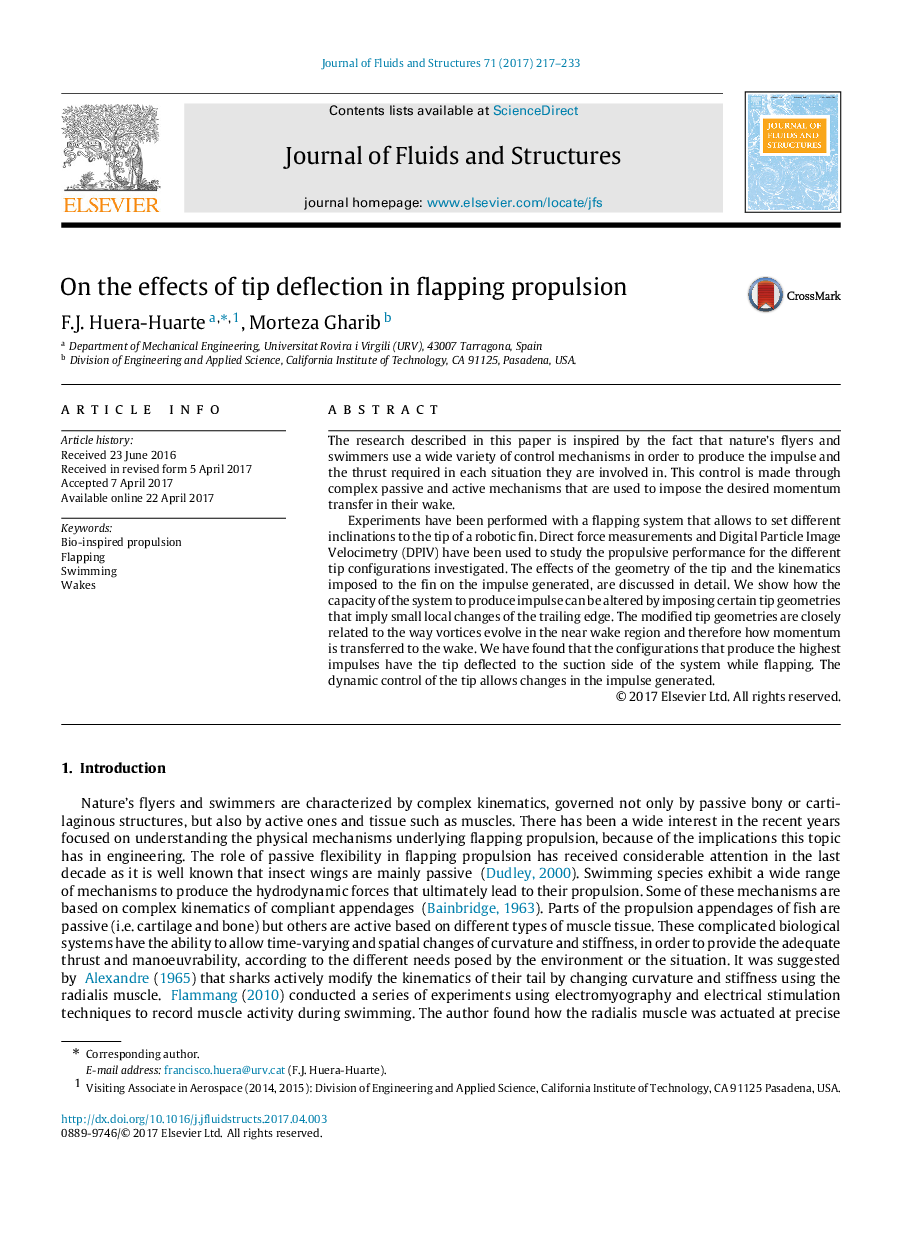| Article ID | Journal | Published Year | Pages | File Type |
|---|---|---|---|---|
| 5017473 | Journal of Fluids and Structures | 2017 | 17 Pages |
Abstract
Experiments have been performed with a flapping system that allows to set different inclinations to the tip of a robotic fin. Direct force measurements and Digital Particle Image Velocimetry (DPIV) have been used to study the propulsive performance for the different tip configurations investigated. The effects of the geometry of the tip and the kinematics imposed to the fin on the impulse generated, are discussed in detail. We show how the capacity of the system to produce impulse can be altered by imposing certain tip geometries that imply small local changes of the trailing edge. The modified tip geometries are closely related to the way vortices evolve in the near wake region and therefore how momentum is transferred to the wake. We have found that the configurations that produce the highest impulses have the tip deflected to the suction side of the system while flapping. The dynamic control of the tip allows changes in the impulse generated.
Related Topics
Physical Sciences and Engineering
Engineering
Mechanical Engineering
Authors
F.J. Huera-Huarte, Morteza Gharib,
